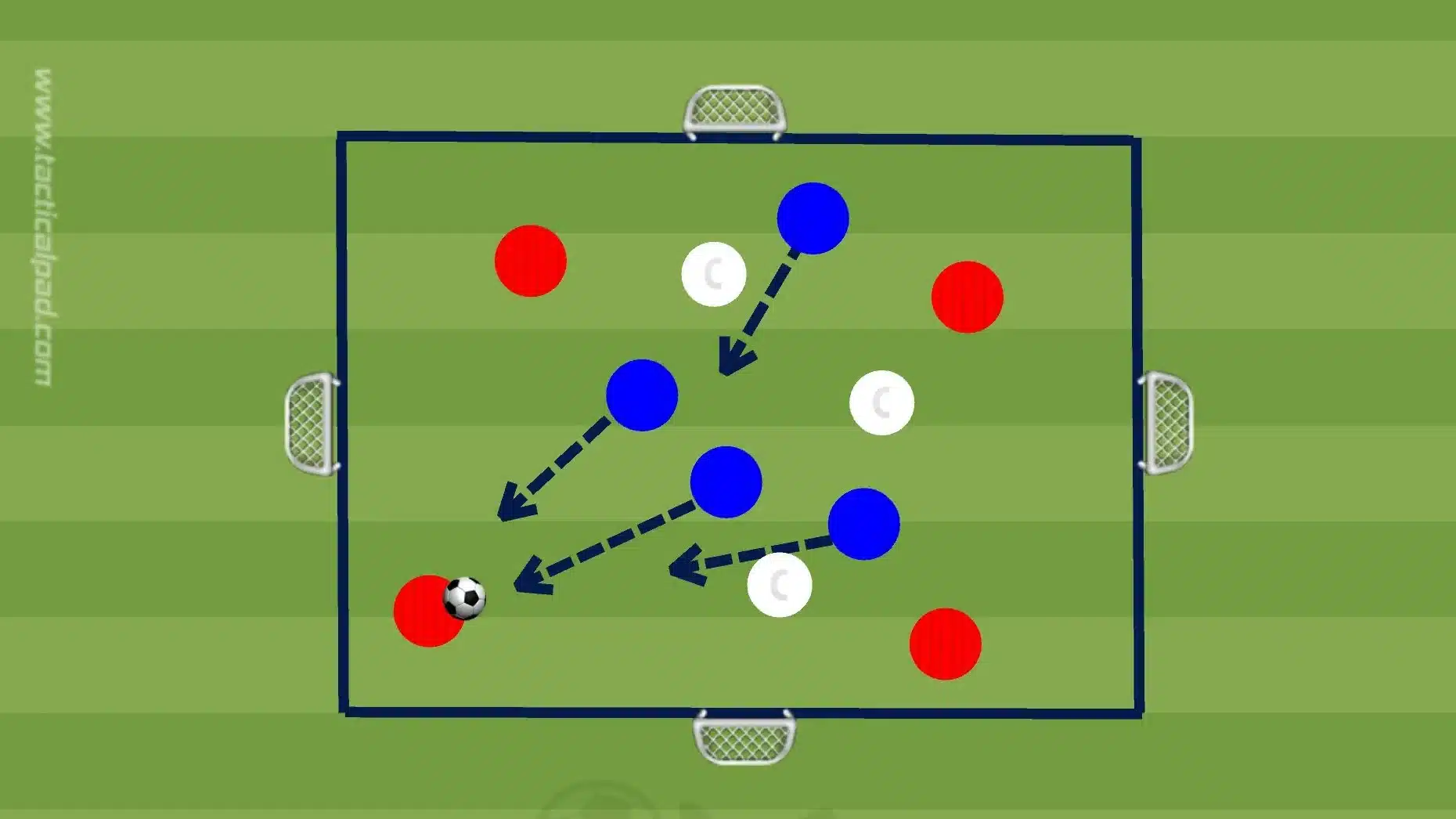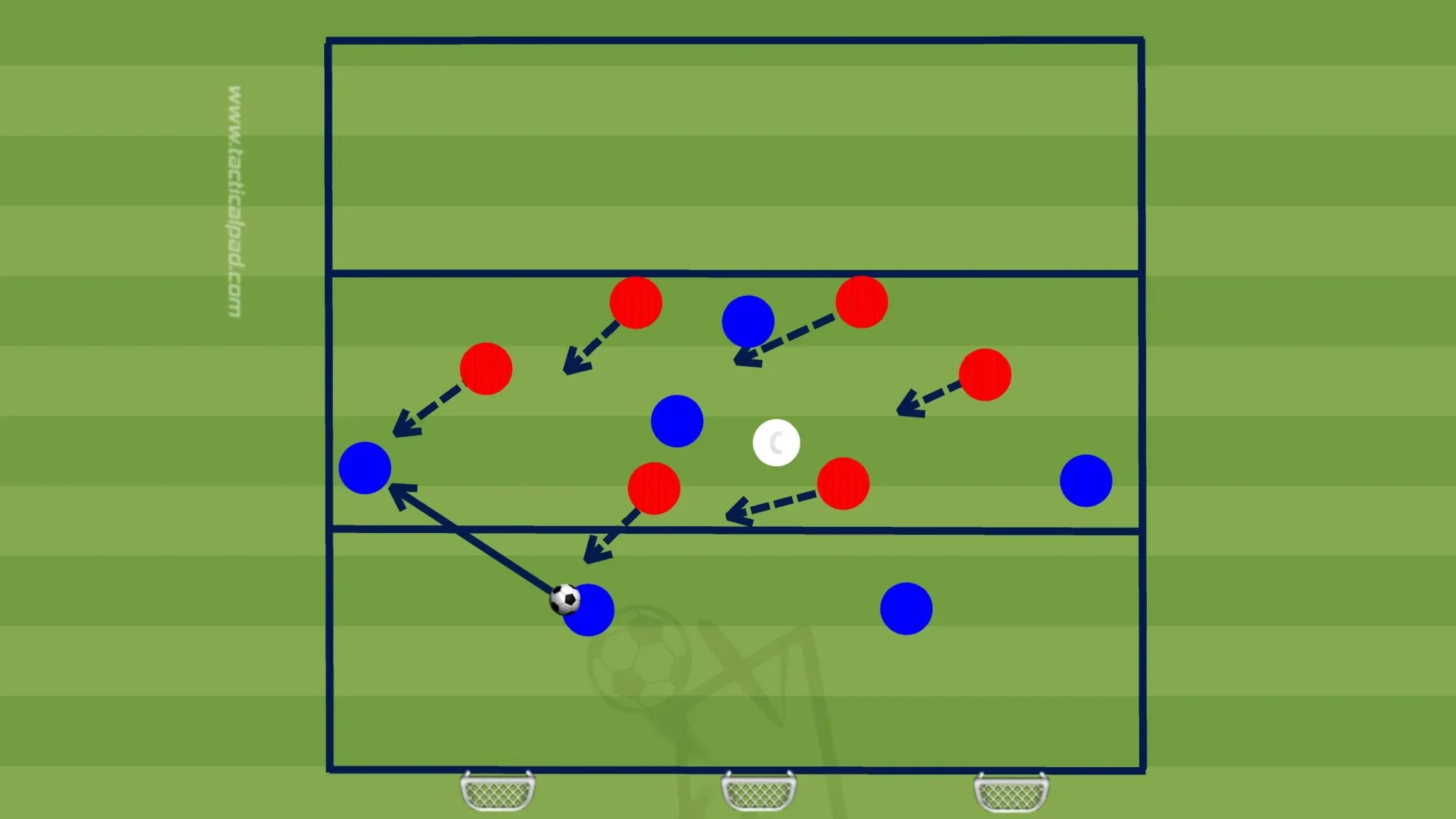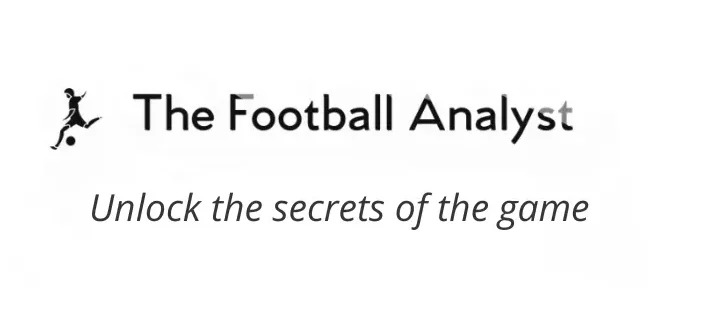Pressing is one of the defining features of modern football. Whether it’s the aggressive, high-octane pressure of Jürgen Klopp’s Liverpool or the compact, calculated mid-block of Diego Simeone’s Atlético Madrid, teams that dominate out of possession often control the rhythm and momentum of the game.
To press effectively, it’s not enough to simply run at the opponent. Pressing must be collective, coordinated, and purposeful. This article explores how coaches and analysts can develop and implement pressing drills that help players apply both high and mid-block pressure effectively, turning defense into an attacking weapon.
Key Pressing Principles
Before getting into drills, it’s crucial to define the principles that should guide all pressing training:
- Pressing triggers: Specific moments that signal when to initiate pressure (e.g. back passes, poor touches, sideways passes under pressure)
- Compactness: Horizontal and vertical distances between teammates must remain tight to reduce passing options
- Cover and balance: Players not directly pressing must anticipate next passes and protect vulnerable areas
- Communication: Verbal and non-verbal cues help maintain structure and timing
- Transition focus: Once possession is regained, the team must transition quickly and intelligently to attack
These principles must be built into your drills so that players not only improve physically, but also develop tactical awareness and decision-making under pressure.
Drill 1: 4v4+3 High Press Activation
Objective: Improve timing and coordination when initiating a high press.
Setup: Create a 25×20 meter grid. Inside it, place 4 players (red) and 3 neutral players (white) whose role is to help maintain possession. The pressing team (blue) sends in 4 players to apply pressure and win the ball.
Instructions: The red team, supported by neutrals, attempts to circulate the ball under pressure. The blue team initiates a high press, aiming to win the ball and score in mini-goals placed around the grid within 5–6 seconds of recovery. Rotations occur every few minutes.

Focus Points:
- One player presses the ball-carrier, while others cut off short options and block passing lanes
- Angled pressing runs to force play toward the touchline or into traps
- Quick transitions and decision-making after regaining the ball
This drill mimics the chaos and urgency of pressing high up the pitch and emphasizes coordination between the front players.
Drill 2: 6v6+1 Mid-Block Transition Game
Objective: Develop team compactness and decision-making in a mid-block.
Setup: Use a 35×30 meter pitch, divided vertically into thirds. Two teams of six play, along with one neutral player who always supports the team in possession. The team without the ball (red) sets up in a compact mid-block within the middle third.
Instructions: The blue team tries to build out from their defensive third and progress into the attacking third, using the neutral player. The red team remains compact and only initiates pressure when the ball enters their zone or a pressing trigger is activated. Once the red team wins possession, they aim to counterattack quickly into mini-goals.

Focus Points:
- Horizontal and vertical compactness between defenders and midfielders
- Denial of central passing lanes and overloads
- Coordinated pressing on predictable passes or poor body orientation
This drill emphasizes reading the game, patience, and controlled aggression—hallmarks of a well-organized mid-block.
Drill 3: Full-Team 11v11 Pressing Simulation
Objective: Apply pressing concepts in a realistic game setting.
Setup: On a full pitch, one team (blue) starts from goal-kicks and is instructed to build from the back. The opposing team (red) is tasked with applying either a high press or a mid-block, depending on the coach’s instructions.
Instructions: Red initiates pressing sequences when specific triggers are activated (e.g., pass to a fullback, backward pass, second ball after a long goal kick). The defensive block shifts as a unit, ensuring compactness and covering key zones. The coach can alternate between high pressing and mid-block scenarios every few minutes to challenge players’ adaptability.

Focus Points:
- Synchronization of front line, midfield, and defense during pressing
- Clear communication and role clarity
- Timing of pressing runs and positional traps
This drill is vital for bringing together all individual and unit-based pressing concepts into a full-team structure.
Common Mistakes in Pressing Training
Pressing is as much about discipline as it is about energy. Here are common issues that coaches should address:
- Overcommitting: Players rush in without support, leaving spaces behind
- Poor distances: Gaps between lines or players allow opponents to bypass the press
- Inconsistent triggers: Pressing lacks timing or isn’t initiated based on shared cues
- Lack of transition focus: Teams recover the ball but fail to capitalize due to poor spacing or decision-making
Addressing these issues requires not just repetition, but consistent feedback and reflection during training sessions.
Final Thoughts
To successfully apply high or mid-block pressure in real matches, coaches must go beyond verbal instruction. Players must live and breathe pressing in training, understanding not only their individual roles but also how their movement fits into the team structure.
By consistently using the types of drills discussed in this article, coaches can cultivate pressing systems that are both aggressive and intelligent. The result? A team that doesn’t just defend well—but dominates without the ball.
